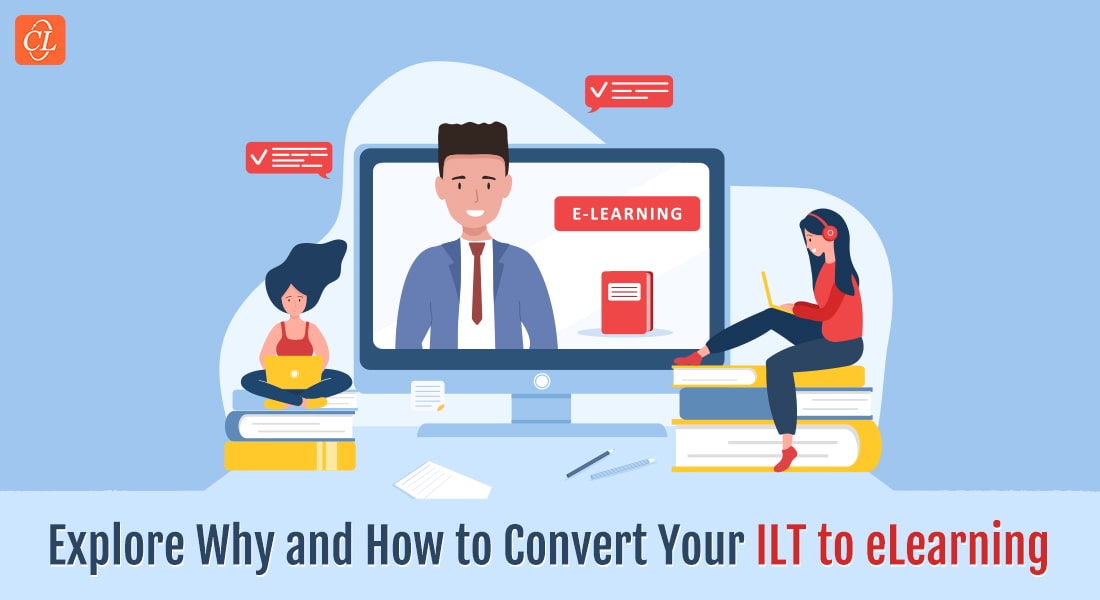5 Tips to Improve the Impact of Your ILT Sessions

Instructor-led training or ILT continues to be a popular training option despite the growth in other training options such as computer-based training, web-based training, microlearning, and mobile learning. However, organizing an ILT training session is expensive compared to other methods. The cost of the venue, payment to instructors and the travel and accommodation costs for participants all add up to the expenses. Considering this aspect, it is important to plan ILT sessions carefully so that it has the right impact on learners and achieves the desired training objective. This blog gives you five tips on maximizing the impact of your ILT training.
1. Start with the learning objectives
Fixing the learning objectives for the session is half the work done. Before designing the session, specify the learning objectives. This can be done by answering questions such as, what do you want your learners to know at the end of the course? What are the skills they should acquire? Answers to these questions will help you identify the knowledge you should provide or the skills that need to be taught.
Getting specific answers to these questions will help you formulate the appropriate objectives and follow the steps to write the learning objectives; consequently choose the right content and instructional strategy.
2. Design and develop the learning experience
Once you freeze the learning objectives, create a plan for the training session. Decide on the content for each session, its presentation and the sequence of presentation. Based on this, you can create PowerPoint presentations, visual aids, and handouts for the session. This will also help you design the assessments for your course.
Decide on how you are going to present this information to learners. Aspects such as the venue and time of the training session, the presentation of the information and the technology used in the classroom, media and visual aids you plan to use are the factors that influence design and development.
For ILT sessions to make an impact, focus on providing a good balance between presentations by the trainer where trainees take notes and facilitating discussions and workshops in which trainees actively participate.
3. Customize training based on participants’ needs
ILT sessions are for a group of people. So they cannot be personalized for every individual in the group. However to create better impact, these sessions can be modified based on the profiles of the audience. For instance, when teaching a group of salespeople about negotiation skills, you can use role-plays to make it relevant and relatable. Deciding the communication style in advance and the methods to be used with the group help in customization.
Using a blended approach works when customizing training for your audience. For instance, when training salespersons or service technicians, people who are always on the move, you can use microlearning modules to deliver theoretical knowledge and reserve ILT sessions for technical demonstrations or product tutorials.
4. Use good facilitators
The role of the facilitator is crucial in maximizing the impact of your ILT sessions. He should ideally be an expert in the subject and have good public speaking and communication skills. Select someone with good presentation skills. He should be able to maintain the attention of the audience and engage them. He should be adept at making the sessions interactive and bring the content to life with metaphors, anecdotes and humor.
A good facilitator should be able to think on his feet and change the pace or content of the presentation to revive the dwindling attention of his audience or implement their ideas. The facilitator must actively listen to the participants, facilitate discussions, and encourage their views rather than dominate the session.
The facilitator should know how to grab learners’ attention by presenting information in different ways. He should help them understand complicated concepts using videos, audio clips, infographics, and animations.
5. Create a collaborative learning environment
Convey to the audience, even before the session starts that they should participate in the discussions. Ask each participant to introduce themselves and conduct an ice-breaker. This encourages a friendly ambience. Hands-on and group activities as part of the session encourage the audience to form teams or work together to complete exercises, brainstorm, or participate in the game. These elements encourage the audience to work with each other during the session and create a collaborative learning environment.
These are a few tips you can use to increase the impact of ILT sessions and convert them to a dynamic exchange of ideas where participants can learn from each other. What are your ideas to maximize the impact of ILT sessions? We would like to hear them.





